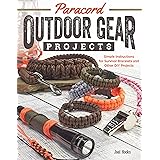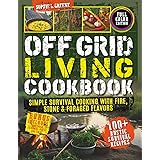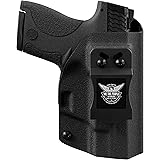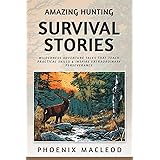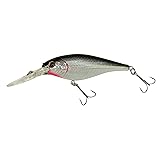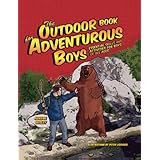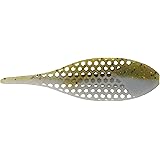The dawn of the zombie apocalypse presents an immediate, visceral challenge: survival. The swift, ominous video above puts this critical decision squarely in front of us, forcing a rapid selection from a curated arsenal. It’s a compelling hypothetical, but true strategic preparedness demands a deeper analysis than a quick glance allows. When the very fabric of civilization unravels, your choice of zombie apocalypse weapon becomes the bedrock of your continued existence, influencing everything from engagement tactics to long-term resource management.
Indeed, understanding the intricacies of each tool presented – and even those omitted – is paramount. A rash decision can mean the difference between navigating the undead hordes and becoming part of them. We must dissect each option through the lens of a post-cataclysmic reality, where every resource is finite, and every encounter carries existential weight.
Navigating the Undead Onslaught: Strategic Weapon Selection
Selecting the optimal zombie apocalypse weapon isn’t merely about raw destructive power; it’s a complex equation involving durability, logistical sustainability, user proficiency, and tactical versatility. A comprehensive survival strategy mandates consideration of both close-quarters battle (CQB) and ranged engagement capabilities. The tools at your disposal must align with your operational environment and threat assessment.
Moreover, the inherent characteristics of the zombie threat—relentless, often numerous, and devoid of fear—dictate specific weapon performance criteria. Head trauma remains the definitive method of neutralization, demanding precision, force, or both. Noise discipline, weight considerations, and maintenance requirements also rank highly on the hierarchy of practical attributes for any potential zombie survival weapon.
The Melee Arsenal: Close-Quarters Dominance
Melee weapons represent the most fundamental form of post-apocalyptic defense: reliable, reusable, and free from ammunition constraints. They demand direct engagement, making situational awareness and tactical positioning absolutely critical.
The Unyielding Baseball Bat: A Blunt Force Solution
The baseball bat offers significant kinetic energy upon impact, making it an effective tool for skull-crushing blows. Its widespread availability ensures procurement is relatively simple, and it requires minimal maintenance beyond ensuring a secure grip.
However, its blunt force nature often necessitates multiple strikes to incapacitate a target, increasing exposure time during an encounter. Furthermore, the bat’s effective range is limited, making it less ideal for managing multiple simultaneous threats. Fatigue also becomes a critical factor in sustained engagements, as swinging a bat consumes considerable energy.
The Versatile Axe: Utility and Lethality
An axe provides a dual advantage: a formidable weapon and an indispensable tool for resource gathering or obstacle removal. Its sharp edge can sever limbs or penetrate skulls with greater efficiency than a blunt object, offering more decisive neutralization in single-target engagements.
Conversely, the axe demands a higher degree of precision and control to wield effectively in combat scenarios. Improper use can lead to the blade becoming lodged, leaving the wielder vulnerable. Its weight, while contributing to striking power, can also induce fatigue rapidly in prolonged close-quarters combat.
The Peerless Katana: Precision and Proficiency
The katana, a weapon often romanticized in fiction, offers exceptional cutting ability and a relatively light profile for swift, fluid movements. Its design facilitates precise, deep cuts capable of swiftly disabling threats with trained application.
Nevertheless, the katana is a specialized weapon requiring extensive training and discipline to master. Its thin blade, while sharp, can be prone to chipping or breaking if mishandled or used against bone with incorrect technique. Furthermore, proper maintenance of such a fine blade in a survival scenario presents its own set of logistical challenges.
The High-Risk Chainsaw: Power, Noise, and Logistics
Undoubtedly, a chainsaw possesses immense destructive potential, capable of rapidly dismembering multiple targets. Its sheer power could offer a psychological advantage and clear a path through dense clusters of the undead with terrifying efficiency.
Despite its power, the chainsaw is fraught with critical drawbacks in a post-apocalyptic context. It is incredibly loud, instantly broadcasting your position to every nearby threat, including potential living adversaries. Its reliance on fuel is a severe logistical constraint, as gasoline will quickly become a scarce and valuable commodity. Moreover, the operational noise, weight, and general unwieldiness make it a highly impractical zombie apocalypse weapon for sustained survival.
Ranged Deterrents: Maintaining Distance in a Post-Apocalyptic World
Ranged weapons are indispensable for managing threat distances, suppressing large groups, and engaging targets without direct exposure. Their primary limitation often revolves around ammunition and resource availability.
The Limited-Ammo Shotgun: Kinetic Impact and Tactical Deployment
A shotgun delivers devastating kinetic energy at close to medium range, making it incredibly effective for clearing immediate threats or engaging multiple targets simultaneously with its spread. The psychological impact of a shotgun blast can also momentarily disrupt an advancing horde.
However, the video correctly highlights the shotgun’s most significant drawback: limited ammunition. Shells are heavy, bulky, and finite. The noise signature is substantial, drawing unwanted attention, and the effective range quickly diminishes. This makes a shotgun a highly specialized tool for critical engagements rather than a primary, sustained zombie apocalypse weapon.
The Silent Predator: Bow and Arrow for Sustained Engagement
The bow and arrow stand out for their silent operation and renewable ammunition potential. With practice, arrows can be recovered and reused, and the skills for fletching new arrows can be developed with natural resources. This offers a sustainable long-term ranged solution.
Conversely, a bow requires significant skill to achieve consistent accuracy and effective stopping power, especially against moving targets. The rate of fire is considerably slower than firearms, and reload times can be lengthy, leaving the archer vulnerable in rapid-fire scenarios. Proficiency training is absolutely essential for this particular zombie survival weapon.
Strategic Imperatives: Beyond the Individual Weapon Choice
While the choice of an individual zombie apocalypse weapon is vital, a truly resilient survival strategy integrates broader considerations. Reliance on a single tool is a tactical blunder; diversification and adaptability are the hallmarks of long-term survival.
Ammunition & Resource Management
Any weapon relying on finite resources—be it shotgun shells, chainsaw fuel, or even the integrity of a melee weapon—demands meticulous management. Scavenging for supplies will be a dangerous and often unrewarding endeavor, making self-sufficiency and resourcefulness paramount. Consider not just the initial loadout, but the viability of replenishing or repairing your chosen implements over months or years.
Skill Proficiency and Training
A weapon is only as effective as the individual wielding it. Proficiency with your chosen tools is non-negotiable. Regular training, even with improvised targets, ensures muscle memory, accuracy, and confidence under pressure. This includes not just offensive skills but also defensive maneuvers, situational awareness, and the ability to disengage when overwhelmed.
The Importance of Situational Awareness
Ultimately, your most critical zombie apocalypse weapon isn’t found in an armory; it’s your mind. Situational awareness, the ability to assess threats, identify opportunities, and make split-second decisions, will dictate your longevity more than any blade or bullet. Understanding when to engage, when to evade, and when to utilize environmental factors as leverage provides a strategic edge that no physical tool can replicate.


